Media | Articles
According to You: GM’s 12 biggest missed opportunities
The comments quoted in this article have been edited lightly for clarity and house style. —Ed.
Asked and answered, as they say in trial law. We can’t thank you enough for participating in Hagerty’s According to You series, in which we pose questions to intrigue and possibly enlighten everyone participating. The latest query: What was General Motors’ biggest missed opportunity?
If you are only reading and not commentating, why not make this episode your first contribution? While our answers were rather comprehensive, it would be nice to know if we collectively missed something!
So without any further ado, here are twelve of General Motors’ biggest missed opportunities.
Buying and selling brands

Has GM done too much of this? Hagerty Community member @Reiner frames it well: “Its biggest mistake was selling Lotus. Its second biggest mistake was acquiring Lotus. Its third biggest mistake was selling Opel, Vauxhall, and Saab. Its fourth biggest …”
Marketplace
Buy and sell classics with confidence
To which I must proclaim: For all that’s good and right with the world, never forget that GM spent an eye-watering two billion dollars to not buy Fiat. Two billion dollars, I tells ya!
The downsides of “Sloan Culture”

Longtime community member @hyperv6 made us put on our thinking caps. It’s hard to debate what he says.
We here want to pin the mistakes on the models but the truth at GM is the mistakes were made internally in the culture of how the company operated. The Sloan culture was good, as each division had mostly one main model and variations of that model.
As time rolled on, the divisions got more models and more variations of each model. This led to overlaps and competition between the divisions, and often mismanagement of these divisions. Then when GM rolled into the corporate-platform era, it began to lose money and make cars that really became just styling exercises and not specific models.
The divisions were always fighting each other. Chevy got the lead as it was stated they sold more cars so they got more say. Pontiac has many success over the years but nearly every one of them were due to breaking rules and lying to the corporation. The GTO broke the engine size rule. The SD-455, more broken rules. The Fiero was canceled and hidden till Pontiac could get it approved.
The now famed Trans Am hood decal was rejected by Bill Mitchell. So John Shinnella took the SD-455 Trans Am prototype and painted it black with gold stripes, just as Bill’s favorite bike, a John Player Special-liveried Norton. He then gave the car to Bill for him to drive. The paint and decal were approved.
It is sad but reform started with Bob Lutz, and cleaning up the cultural issues at GM continues to this day. This is why there were so many mistakes, and that’s why the company went broke. While not perfect today GM is much better, and it will be OK.
1923 Copper-Cooled Chevrolet

John wishes us to never forget a vehicle from 100 years ago. That’s right, a full century has passed since the 1923 Copper-Cooled Chevrolets hit the road, and they didn’t represent Charles Kettering’s proudest moment. Luckily he overcame this mistake to make the overhead valve V-8 just two decades later.
Community member @Mike agrees and adds a fantastic backstory to the equation.
The 1922 Copper-Cooled Chevrolet was rapidly discontinued and recalled (the only GM car ever to have a 100 percent recall) due to uneven cooling caused by poor cooling-fan design—front cylinders ran cool, rear cylinders ran hot.
In 1921, a Dayton inventor showed the GM folks his air-cooled engine design (SOHC, sodium-cooled valves) that used a squirrel-cage blower and calibrated ducting that provided even cooling front to back. GM didn’t listen, as it already had Boss Kettering’s design, which just had to be the right answer. History disproved that. Had Paul’s alternative design been adopted, air cooling might have come to GM 38 years sooner …
Ho-hum Hummer

The aptly named @Hummer H3 Owner wants to remind us that the Hummer used to be an exciting off-road vehicle for people with more limited budgets and not a massive flagship with a much smaller following. (For a bit of alternate history, check out this article about a pair of ill-fated 2000s concepts that might have saved Hummer brand. —Ed.)
Dropping the Hummer idea completely and never coming back with a mid-size, off-road SUV immediately after the turnaround was a mistake. The Hummer crowd is remarkably loyal and dedicated. The H3 adventure package put some real pressure on Jeep and the V-8 Alphas were and maybe still are impressive. The H3T on the other hand was simply ahead of its time.
And our very own @hyperv6 gives fascinating insight to go with this: “Hummer never should have been a brand. It should have been part of GMC. That has been corrected today: Bob Lutz said it was one of his greatest errors.”
Killing the Metro
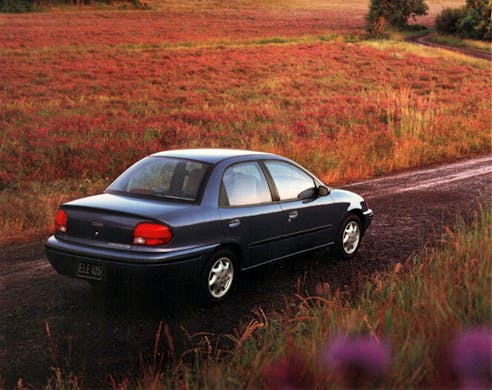
In the same vein as my foray into this question, the GM EV1, Jerry wants us to consider the “lowly, lovely Metro.” Or, as he puts it: “I bought my Metro nearly 30 years ago and got 45+ mpg. Nothing available comes close today. [Especially for its $8000-ish price tag, before discounts and incentives. — SM] What happened?”
Beholden to Holden?
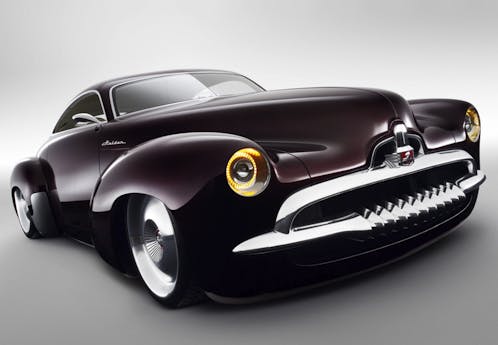
Richard has admiration for GM’s creations from the Land Down Under, and thinks Holden’s failure to launch was another one of GM’s big mistakes. Hard to argue with this!
I agree with most of the opinions here, but I really think that GM missed an opportunity by not importing the Australian line of Holdens to sell here as Holdens. GM already owned the factory, the cars were good, and I believe with proper marketing the line would have been successful, selling more cars and possibly saving the Holden brand from extinction, as well.
Even when it did bring in the Pontiac G8 and the Chevrolet SS, GM never really marketed them properly. Holden also had smaller, less expensive, civilian-quality cars as well that would have created a lot of interest.
Misguided minivans
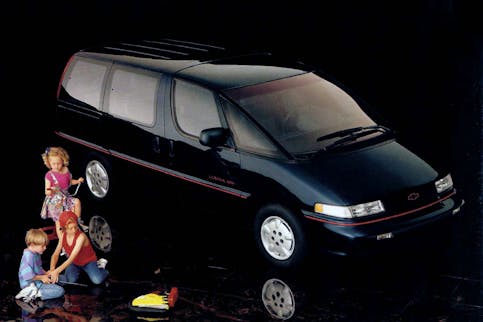
Vince says: “Let’s talk minivans. Trying to peddle the Chevy Astro van, followed by the Dustbusters from Pontiac, Olds, and Chevrolet, was a disaster. Talk about blowing it in the hottest segment in the mid-’80s throughout the ’90s.”
Hard to disagree with this, as Chrysler’s success was unanswered for so many years!
PhD-level bean-counting

Hagerty Community member @ParaboTech hits on a common theme we hear elsewhere, as the notion that overly cost conscious accountants (i.e. bean counters) are a big problem in the halls of General Motors.
With GM, it always seemed to be about the number crunchers. I can understand about 2008–9 era with bankruptcy at the door. But, if the GM powers really were into cars, they would’ve found a way to continue with Camaro way back then and also Fiero. Solstice and Sky were probably a tough sell at the time. Still would’ve been great to continue those two.
But @TG offers a good counterpoint: “I think John Z. DeLorean discovered what happens when you go the other extreme and cut the number crunchers and marketers out of the equation. They may have too much control sometimes … but they are there for a reason.”
The “not invented here” fallacy
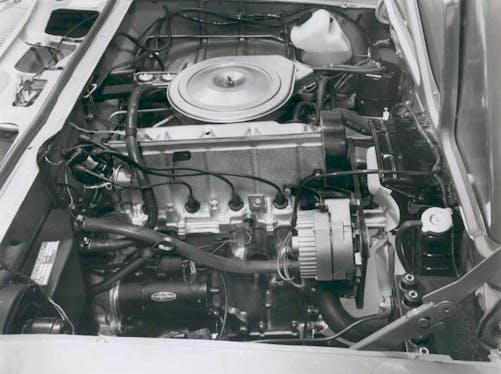
@Moparman gives this notion a twist, while offering the Chevy Vega’s 2300 engine as proof.
I’ll add the “designed by committee” problem, including the Vega being sacrificed on the altar of the bean counter. GM had a chance to make inroads against the import market, but the opportunity was squandered due to the refusal to use proven tech because of the “NIH” (not invented here) syndrome.
GM foisted dicey new tech to buyers with inadequate cooling, and no rust protection. It soured the consumer on what was actually a stylish small car that woulda, coulda, shoulda been a champion in the market.
Corvair and Fiero neglect
Does it seem logical to lump the Chevrolet Corvair and the Pontiac Fiero together? Both were significantly different than anything else available from GM in their respective time periods, so that’s perhaps why so many folks feel this way.
@Kern: I do not know if they would be considered the biggest missed opportunities or not, but I consider the second-generation Corvair and the 1988 Pontiac Fiero as innovative and leading-edge products in their time. As an automotive engineer, they are the only two GM products that I considered for my automotive collection.
@Dean: Not advancing the Corvair and Fiero. Both were so close yet so far from the promise they had. And I owned one of each.
@hyperv6 (in reply to @Dean): You have to consider the Corvair was very expensive to build versus a cheaper V-8 Camaro.
Also emissions regulations killed air-cooled engines. The Fiero was killed by the Corvette people; they feared sales being lost to a more powerful Fiero that was coming.
@Thomas: A multi Corvair owner (two Corsas and two vans), I am qualified to say that when the car-buying public sees near-new cars with oily rear ends, a certain stigma is generated. Viton pushrod tube seals were available but GM went with cheaper neoprene rings instead. Bad decision.
Also, and perhaps even more important from a legacy and lawsuit standpoint, was its decision to ignore the benefits of the supplementary transverse rear spring, which GM finally adopted and made standard for 1964 just one year before the complete rear-end redesign.
@Mike: Second-series Corvair. Exquisite design, fully independent rear suspension (not swing axle—take that, Ralph Nader!) and the worst of the oil leaks/popped fan belts of the earlier cars cured. And available with a turbo, like the first-series cars. Instead of touting all the improvements—both appearance-wise and mechanically—GM folded under Nader’s bad publicity and slunk away.
Playing it safe

Hagerty Community member @Perpetually Unimpressed thinks GM coulda taken more risks.
GM’s biggest missed opportunity has always been playing it safe. You want a company that commits to innovation? Go to Ford. Between company-wide racing bans, V-8 tech that hasn’t really changed since 1955 (new C8 flat-plane DOHC V-8 notwithstanding), timid rollout and commitment to EVs, and half-hearted development of truly interesting and innovative cars, risk is something to which GM seems chronically averse.
The big picture
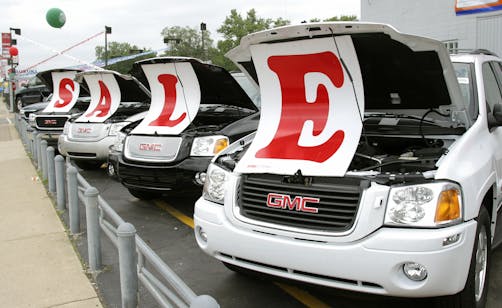
Perhaps Dale said it best, because it’s likely not one vehicle, one brand, one person, or one department of employees that inspired our initial question.
The missed opportunities happened much earlier than we realize. In the early 1960s, the connection between the “car guys” and “tech guys” promoted innovation and a product stream that dominated the market. The increasing control of the financial side of the company strangled both, often forcing key innovators out of the company or burying them, leading to ever more control by the bean counters and the eventual collapse of the company.
Divisions lost the incentive to innovate because they were marketing fronts only. Labor relations deteriorated, because when money is the only thing that matters, it’s where all the attention goes on all fronts. The more cost-focused the company became, the more innovation became buried and that led to losing more market share … and money. The diversification into Electronic Data Systems (EDS), Hughes, was a typical distraction for companies that lose their way in their primary arena.
***
Check out the Hagerty Media homepage so you don’t miss a single story, or better yet, bookmark it. To get our best stories delivered right to your inbox, subscribe to our newsletters.
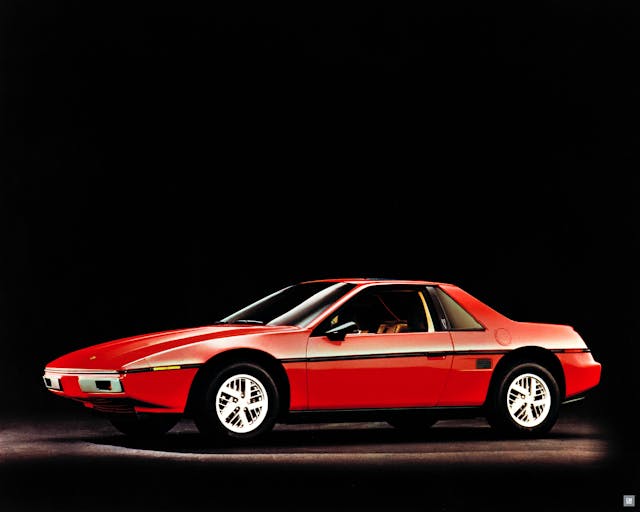









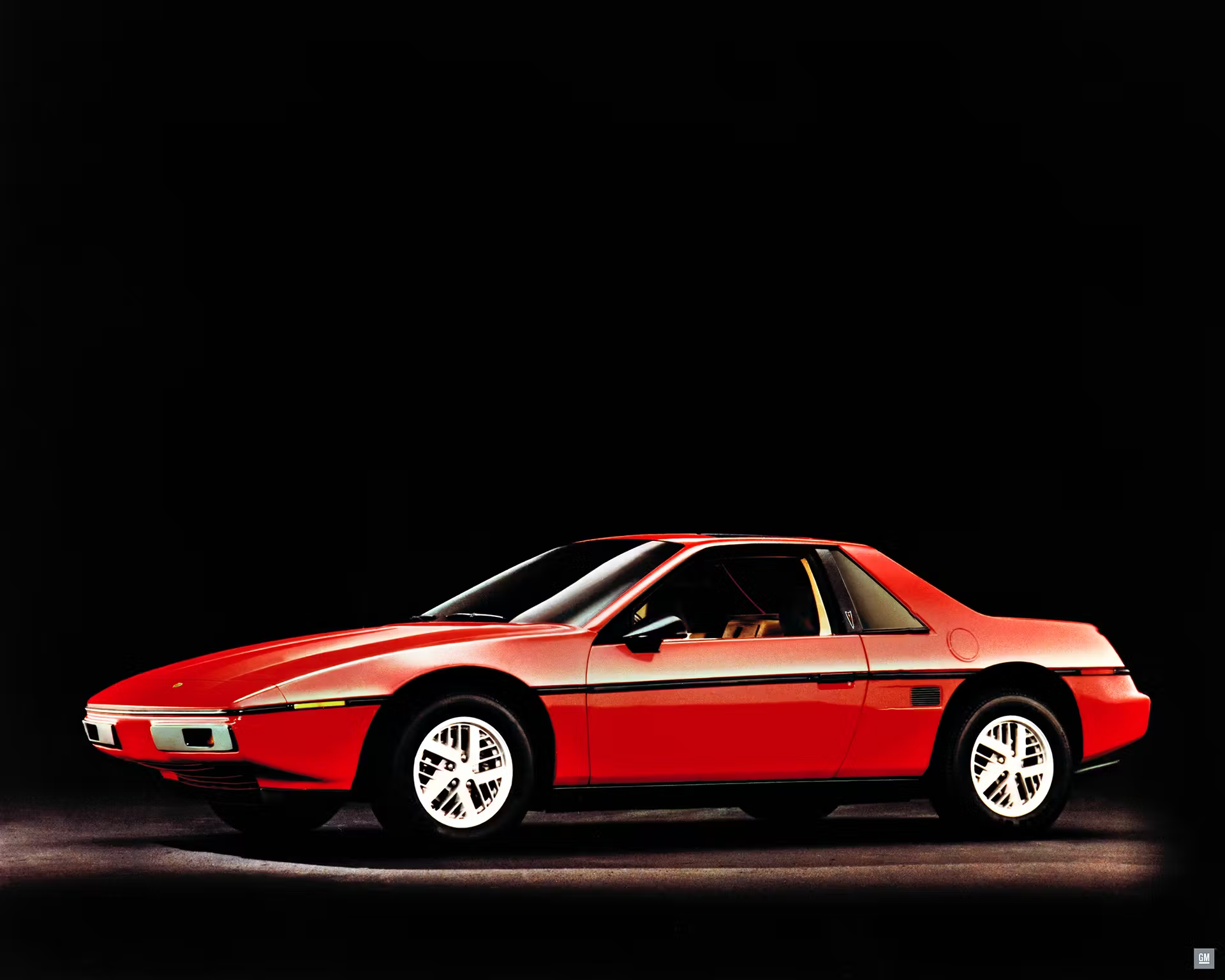






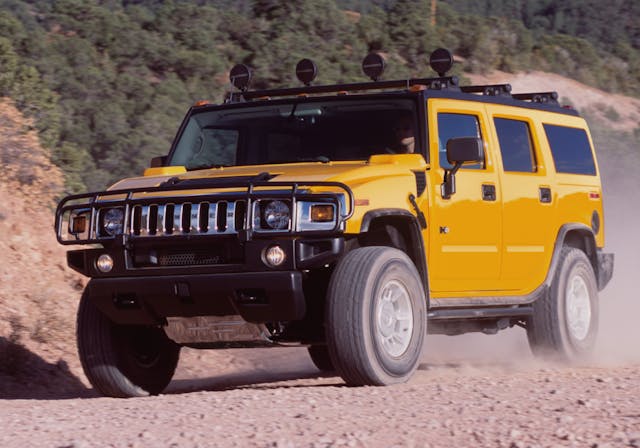








These results show how people really do not understand the true issues.
The real problems were much deeper. The Culture in general at pre bail out GM was a mess. What you see here some of the ripples on the lake surface and not the rocky bottom that really was the trouble.
Holden was gone due to pure economics. Ford and Chrysler left before GM.
Save the Metro? That was not on anyone’s mind.
The Corvair was a victim of cost and the lower priced Mustang and Camaro along with the Emissions of a air cooled engine that killed the VW. Much of these issues you need to know more about them than what the paper stated. If you run the numbers you see how and were they played a role
The failure to move on from the Sloan deal sums up the main issues and GM then left the divisions fight among them selves vs working together.
There was tons of bad blood between Pontiac and Chevy much more than Chevy and Toyota. That is not how you run a company.
But all companies have their own sins. Ford was a mess every time a Ford called the shots accept for Edsel Ford and he died much too young.
Chrysler has been a mess since Lee left.
Toyota is struggling at leader ship as they try to replace Mr Toyoda now.
Nissan was destroyed by the French. Porsche tried to go low dollar in the 80’s and damaged their rep. Ferrari sold to the public market and are now making a SUV? The old man would have choked Sergio.
We should do this question on all the different brands and see if we can find some truth in the many opinions.
Having been at Chrysler during the Iacocca era, you are incorrect. He was great at the start, instilling hope and a winning attitude, despite bringing in his Ford cronies that followed by cronyism and hangers-on. Toward the latter stages, he started to believe the hype around himself. He wanted the Auburn Hills center named after him with a huge obelisk in front of it; wanted the company to buy him an apartment in NYC; changed the design of cars nearing production, costing millions to retool, to say nothing of adding out of date vinyl roofs and wire wheel covers.
Think you meant to say “VWBug”. VW as VAG seems to very much alive and doing well.
No. I think he meant VW. After the discontinuation of the Beetle and the type 3 VW,s Volkswagen replaced them all with AUDI/NSU products and then continued to buy up other automotive names to put their badge on. Not one of the cars that VW makes today is even close to being a relative to the real VW that brought the company top the top. They gave up on their product and I do not believe that the air cooled engine or even the waterboxer engine (’83-’91 Vanagon) could not have been developed into a truly competitive product with the right engineering.
Re the VW waterboxer, no kidding. I transplanted a Subaru 2.5L boxer into our ‘87 Vanagon camper. This is the motor that car should have had all along. I know boxers are expensive to build, but wow!
Bought a Vanagon ’84, and had problems from the start. Pulling a tent trailer to Alaska through Seattle exposed knocking from the right rear CV joint. Got grease and a needle in Prince George CN. to fix. Three trips to San Jose from Arizona resulted in blown “head gaskets” – $1300 @ the VW dealer. I say head gaskets cautiously, as they are only a plastic O-ring material, and were $300@. Air conditioning was good while it worked – hose connection at the compressor kept breaking from vibration, and losing refrigerant. Otherwise a nice upgrade from the Type 2 bus that was traded in. Sure miss the Type 2!
– you said:
“Ford was a mess every time a Ford called the shots accept[sic] for Edsel Ford”
That statement needs explanation … Henry Ford’s genious and successes were obvious in so many ways, as well as his many faults, especially labor relations and anti-Semitism.
Certainly, later failures at Ford continued with poor management.
Engine repairs requiring cab removal with F-Series trucks negates me from ever considering an F-Series truck purchase in the future.
If Ford wants to continue with their truck sale’s future success, give us a tilt front end, and good engine access for repairs.
They missed the retro SUV boat in a huge way. New Ford Bronco is selling like crazy. What did GM do with the Blazer? Made a boring crossover. Missed it guys!
I have owned 2 blazers, a 72 and 87. That tall car they call a blazer today just makes me sad. They could have called it anything else and it would have sold just as poorly as it does now, but then they would have had the option to bring back the nameplate to compete with the jeep and bronco. So sad.
What about Ford putting the Mustang nameplate on a boring EV crossover? For can be just as bad as GM.
What about Ford putting the Mustang nameplate on a boring EV crossover? Ford can be just as bad as GM.
GM still owes me and every tax payer 8.6 billion dollars! Chrysler owes us over 2 billion. What did we the tax payers get in return, Obama? With 8.6 billion, GM should have been the most innovative car company in the world for the next 40 years.
I owned a 1998 E350 with the 5.4 V8. It launched just ONE measly spark plug, just one! Was I unfair to call up Detroit and give them some engineering advice?
(The advice was not well received so I had to inform them that not only will I not be buying any more new Ford products but I WILL be spreading the word about the alarming decline in design judgment and quality.) This, after my extended family had bought 30’s flathead V8’s, ‘49 Lincoln, ‘57 Fairlane 500, ‘65 Mustang, ‘67 Cougar, ‘74 Pinto Wagon, ‘92 T-Bird, ‘96 T-Bird, and 2003 Escort ZX2. And my Aunt & Uncle had a ‘53 Ford, ‘57 Ford, ‘69 Ford, and an ‘88 T-Bird.All that’s left is a 289 I built myself for the Shelby continuation FIA Cobra (over 25,000 miles and still going strong).
Except for…you know….the Hemis…..Challengers…..Chargers…..Vipers…..
Yes Holden went on economics, partly GM, partly Liberal Party. But Chrysler were gone by 1980 so you can’t lump them in. Toyota closed a factory only a decade old. In no other country have they done that. Don’t forget the time GM took the Astra from Holden, their second best seller, and set up Opel to sell the same car against Holden. Genius move that. How much did they lose there to shift precisely 1,530 cars in 10 months before decamping to Europe and leaving Holden to service the cars?
However postulate a situation where Holden built the RWD sedan/wagon for Chev and some of the same development for Cadillac. There are still markets for medium to large RWD sedans around the world that GM has decided not to fill.
Anyhow I agree there were a lot of problems. But this was about missed opportunities. I say the GTR-X
Mr. Mehta:
Why am I being advised that I am posting replies too quickly? I average maybe one every two weeks. Other respondents are having their comments aired daily, it seems. Is this another software problem? Or should I just uninstall Hagerty and be among the silent majority?
Hi Anthony,
Sorry that’s happening, but the software isn’t configurable for us in this regard. BUT I will make note of what’s happening to you and see what I can do about it. We, like all blogs, get hammered by spammy accounts (50+ daily) so I suspect this is put in place for that reason. And nobody wants to see what they post, even if its only up for a few hours.
This is a Band-Aid and not a cure, but whenever I’ve gotten that “slow down” message, I copy my response, log out and log back in, then paste my response and whamo, it goes through.
Oh wow, that makes sense and I will relay this and the issue from @anthony into a support ticket.
Well it doesn’t make sense, but I hear ya and I will look into it. Thank you both for bringing this to our attention.
The same with me. Having been a participant in the “Big Three” and suppliers, I feel I have first hand input, not just offhand comments.
The too quick thing happens all the time. Sometimes on my first reply of any article. Also I get “moderation” all the time. It’s very annoying.
I got the same response. Having spent my entire life in and around The Automotive World, I quietly said to myself… FU. I guess that’s just how those of us who lived in the trenches talk when confronted with STUPID.
BTW…Some of the crazy “opinions” expressed here would never pass any scrutiny. You would think Hagerty would value our feedback? Still like Hagerty for their approach to insurance… maybe not the editorial staff?
I hadn’t posted in weeks, if not months, and received the message that I was posting too much and my entry wouldn’t appear.
Bottom line…the old comments system was waaaaay better. You could edit. You could add pictures. You knew which comment was replied to. Was nice when you got notified of likes too.
Just piling on to mention that this 3rd party commnt section is hot garbage, espeically after Hagerty junked a superior comment system.
+1
Nice to see the Fiero getting some much deserved love. It was a really good sports car for all five of its model years, despite what the internet (and most of the automotive media) tries to tell you.
On the other hand, what on earth was the thought process behind including the Lumina APV/Trans Sport/Silhouette as a missed opportunity? Those vans have the 3.1, 3.4 and 3.8 engines, and as a result are mechanically nearly indestructible (way better than even the surprisingly decent Chryslers). The removable bucket seating was revolutionary at the time, and the styling looks like something out of Star Trek (Oldsmobile even ran an ad with Leonard Nimoy and his daughter in an Olds Silhouette. These vans were genuinely aiming for the stars, and they hit the target. The only failure was by anyone who chose to buy the Dodge instead.
I think GM and a lot of other folks missed the boat on layout and dimensions when it comes to minivans. Chrysler figured out the magic formula and folks that have been successful in the minivan segment largely copied them
You had to be careful the front doors wouldn’t remove an eye with its swept back top corner.
I am not alone; there are still thousands of Fiero enthusiasts and well-preserved, fully-operational, road-worthy Fieros out there. I’m an old GM guy: Corvette, Camaro, Firebird. Some 28 years ago I happened upon a Fiero….my first of many Fieros. Twenty-two years ago I acquired my life-long “keeper”: 88 Fiero GT.
In general, the innovative Fiero handled well, felt sporty, looked sporty and was/is just plain fun to drive! At a minimum, these 35 year old cars are still prized and in demand, while remaining relatively inexpensive. For GM, I do agree the Fiero ultimately became a missed-opportunity.
Indestructible? 3.1 3.4. Had lower intake gaskets and head gasket issue. Great money maker for independent shops. A lot of engines replaced. Bad enough Class action was filed and GM settled.
I think you can pick any car company and circle all of their mistakes (pun not intended Ford fans)… but trashing GM has been a bit of a competitive sport going back ages
Unfortunately it is sport for some. Those in glass houses should not throw rock. (Ford reference here is intended}
I could do the same for every MFG and call lots of mistakes.
What is sad is many post opinions in stories like this with out the benefit of all the information on the how and why some of this came about. They then form incorrect opinions on many cars.
Corvair and Fiero are two that are so often miss understood as the general public never learned the truth on either car. This is why I would love to publish a book on the Fiero to tell the whole story.
What was interesting was the man who did write the GM approved book for the Fiero posted here. I asked it would be great to update his book with the rest of the story. He is now retired from GM.
Just his month Car and Driver released more info on the Fiero that was seldom told from him and John Scinella the designer. One point was for year there had been the story Lotus did the 88 Suspension. The truth is GM designed it under Tom Goads team. The interesting part was Porsche Engineering was called in to tune the Turn in and on center feel. This while Corvette was racing Porsche in show room SCCA racing.
In the Fiero Book Gary wrote he did note the two 2.9 Turbo cars that were built were call the Porsche Killers. Their neutral density tail lights were crafted to light up and say Porsche Killer. The book did state the lights were removed due to Porsche doing for for GM but the book left out what.
At the same time Motor Wheel a division go Goodyear tire at the time was working on composite wheels. In some photos of the 1990 model back in 1985 they had a set of the composite wheels on the Fiero. They in the end were never used and the Shelby Shadow used a set as an option on a Limited number of cars.
I know of 6 of these wheels are still left from the Pontiac program.
Will agree. “Same V-8 tech since 1955”. Pushrod compact OHV design. Proven and reliable. Frankly will take it over the Ford modular engine families- with their attendant problems most notably frozen plugs in the heads.
The problem was Chrysler hit the mark on what a Mini Van was to look like. Everyone else tries to reinvent them with different styling but it just made them weird or impractical.
The GM vans were good vans but the plastic body and long nose just did not work. They redesigned these models with steel bodies and normal noses and sold well but disappeared into history as just another mini van.
The Aztec was another too much. The only reason it is popular today is due to Breaking Bad and for being odd in a Pacer Kind of way. Good for being remembered but not for being successful.
When I worked at Chevrolet and Pontiac dealerships, we called those minivans “the Tupperware bus”.
First mini van we had was a 86 plymouth voyager which was a good improvement over our 80 4 door chevette. We he went to a astro van and never looked back, had three of them. Rear wheel drive and more comfortable, room, and flexible, just a better vehicle.
I agree all those cars were the worst in my opinion. General Motors should kept making the 94 impala ss in a 4 door and two door until 2000 and also should have increased the the horse power.
That is one of the things I have pondered. Ford went forever with its Crown Vic and GM couldn’t make a go with that model Impala? It’s just my opinion, but that Impala was far better looking than the Crown Vic. Can you imagine if they have continued working on that chassis until the LS engines came around?
Elon Musk is buying Ford and bringing back the Crown Victoria, Marauder, and Town Car – you heard it here first.
And rebranding Tesla as Edsel.
Now that’s funny right there!
I guess beauty is in the eye of the beholder. i alway thought the 91 to 96 impalas where bulbous and quite unattractive. I done even want to talk about the wagons.
They killed it just as the LS family arrived. Fall ‘96 in the Corvette.
GM had a lot of innovation over the years. One problem was not following through. Too much emphasis on numbers sold and profit. Not enough quality control. Then too much ‘me too’ bland designs.
No profit, leads to no innovation, which leads to bankruptcy. Then the Government bails you out and then the “suits” go on vacation in The Hamptons.
Actually GM was one of the most innovative companies out there but the problem was they were advancing thing either before their time where the electronics could not support it or it was put out before it was ready.
GM went bankrupt more due to bad union contracts. Trying to run too many divisions and making all their cars on the same platforms with only styling changes. Olds and Pontiac need to be put down years ago. Saturn was left to fail and Cadillac never had the same plan more than 3 years in a row. The move to all FWD was a poor idea. It was more mismanagement and toxic culture that hurt them. Pontiac and Chevy were more enemies than Chevy and Toyota.
One idea that should never have left the drawing board was the Pontiac Aztec. How stoned would you have to be to think that was a good idea?
True, but executed correctly ie the Buick Rendevous and you have a winner.
The most recent GM missed opportunity is assigning Chevy’s Blazer model name to just another crossover while Ford brought back Bronco with Jeep credentials and premium pricing. And an off-road capable vehicle fits just fine with corporate EV strategy.
The New bronco would be Destroyed within 20 mins of offroading—-Plastic skidplates ect— Folks do love the image though-
Not sure where that comment or opinion comes from. “Destroyed” in 20 minutes?
The new Broncos are amazing in their ability to be a comfortable street machine and have excellent off road capabilities.
In regards to the metro,I had an 82 rabbit,gas engine,stick shift that got 51 mpg hwy. I know people are going to say,but that vehicle was light,no safety features etc.well I also had an 04 Saturn ion stick shift that got almost 51 mpg hwy. You’d think by now non hybrid cars would be getting at least 60-70 mpg!
GM’s best cars were rear-wheel drive from the 50’s, 60’s, 70’s, and 80’s. Everything else was marginal. Their full-size pick-ups both rear-wheel and 4-wheel drive are really good vehicles. How can we forget the Vega?
The FWD late eighties/ early nineties A cars were reasonably decent. Am still using a ‘91 Century with the durable iron Buick V-6.
I always thought the Chevy Astro van looked like the Disneyland Monorail.
Loved my Astro Van.
What about the EV-1. Had GM pursued this innovative idea, they may have become what Tesla has in present day!
The EV1 was nothing more than PR and an experiment. Michale Moores moving was lies. This car would have cost $70K to sell it and then to support it would have added more cost. This is why it was lease and removed before they were worn out and needing parts.
It was the same plan as the Chrysler Turbine cars of the 60’s.
I rode in one and what was learned has been used in the EV of today but back then these things were crude and not ready for prime time.
GM did take risks, until the mid 1970’s seemed to shutdown all risk taking, You mentioned the Corvair, but the 1961 small cars by Pontiac, Olds and Buick took a few risks as well. While the Olds & Buick’s were standard RWD Front engined cars, they where unibodies, and powered by small Aluminum pushrod V8’s. The Pontiac version used a variation of the Corvair Trans-axle in back, and either the large slant 4 ( the right bank of a 389 V8) or the aluminum V8.
How about the FWD Toranado or Cadillac Eldorado? The Pontiac OHC-6 of the 1960’s, and of course the Turocharged Olds Starfire’s. Then there is the Cosworth Vega, the FI engines that Chevy and Pontiac made in the 1950’s. Even the Corvette’s Fiberglass body was a big risk.
But I think the Bean counters took the reins in the early 1970’s, and it all changed for the worse. Not that all of the risks they took were great products, but they were gambles.
I miss Pontiac as they seem to be the only division that did rub the bean counters the wrong way. But as has already said, the bean counters have their place, just not in charge of the company. Just my 2 cents worth.